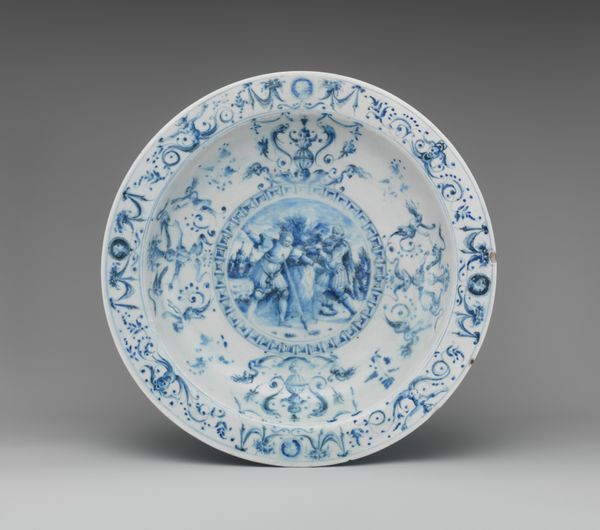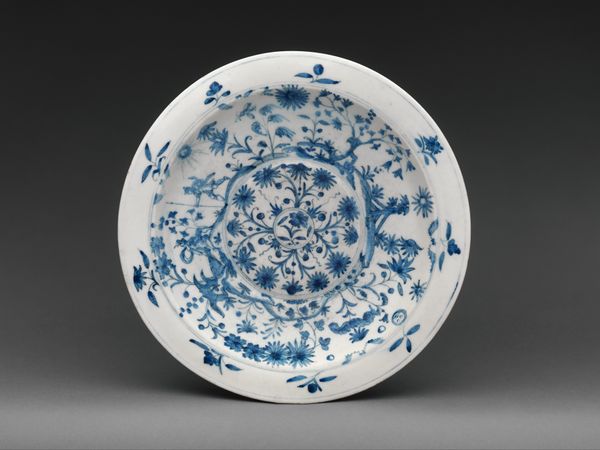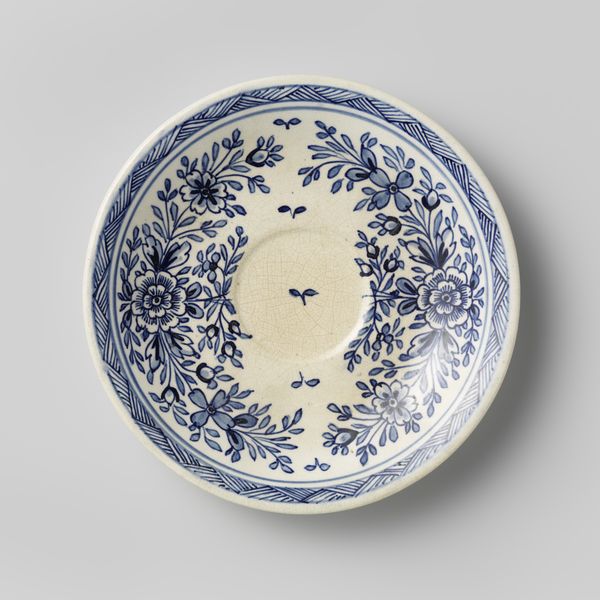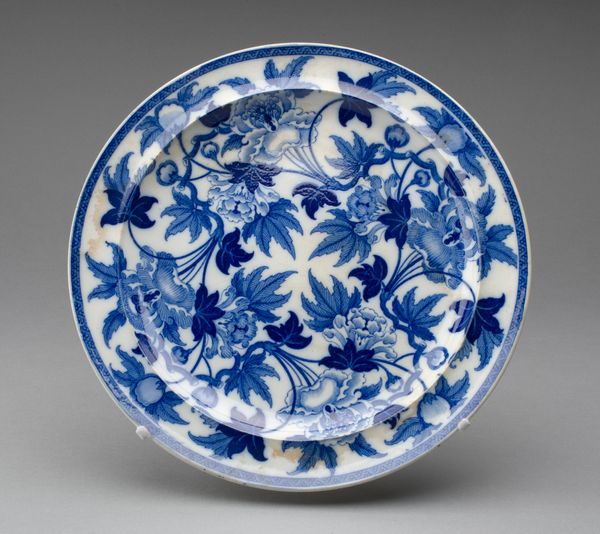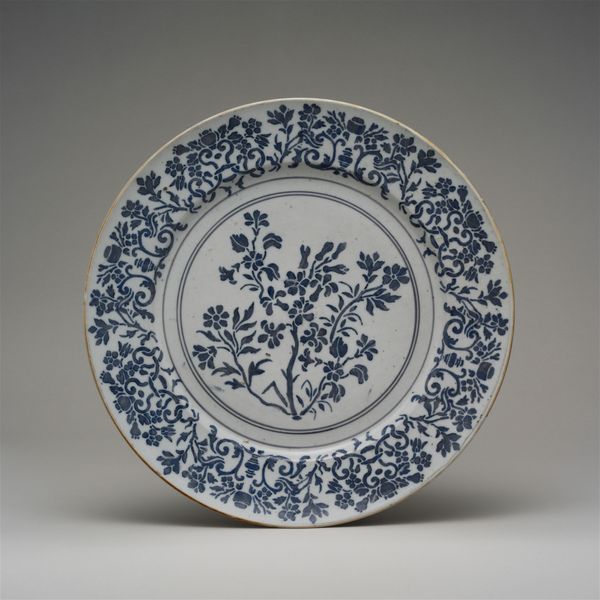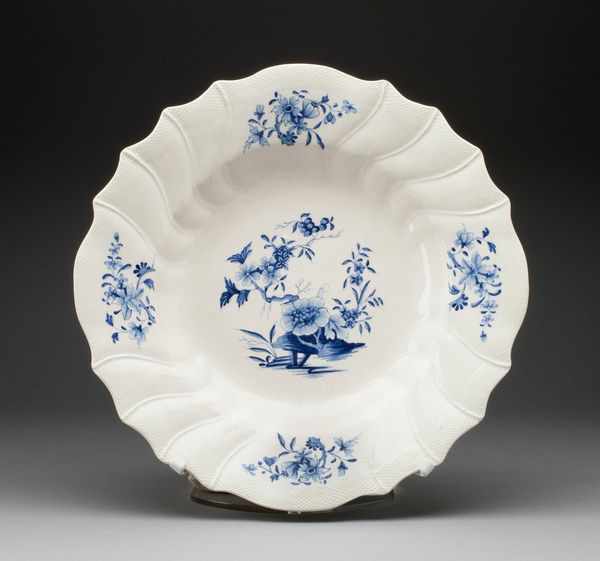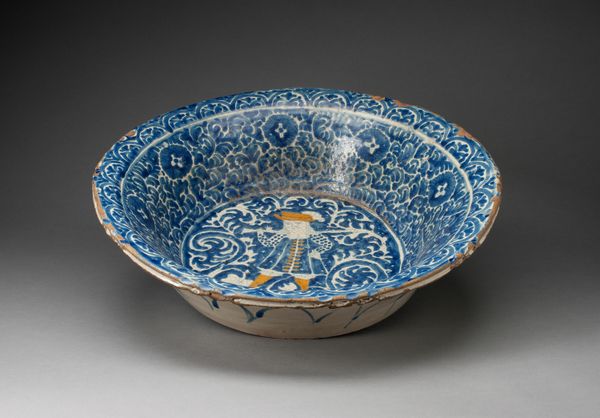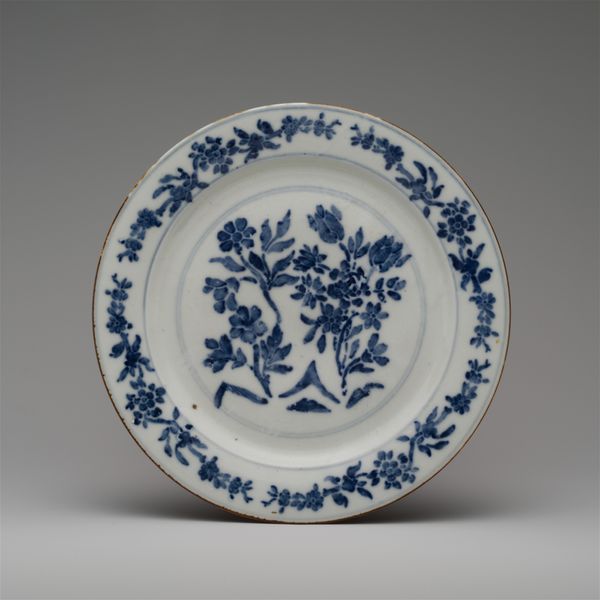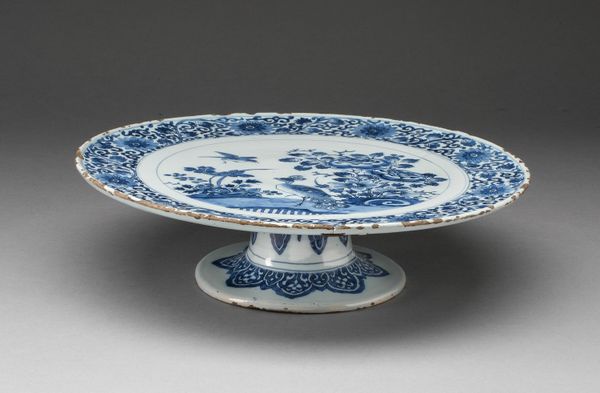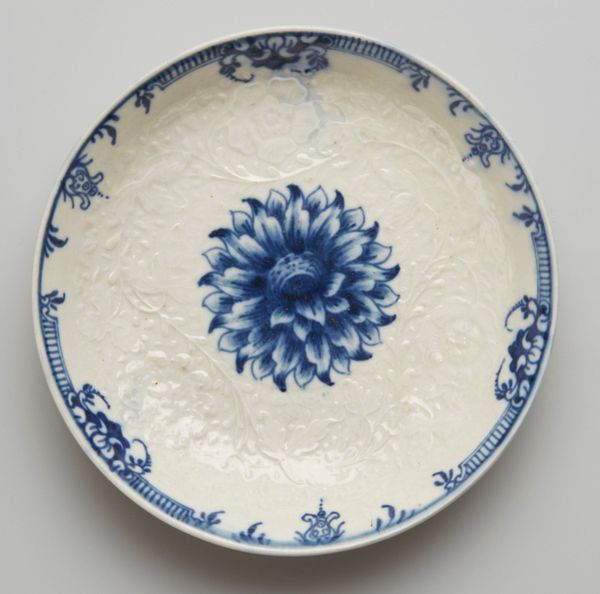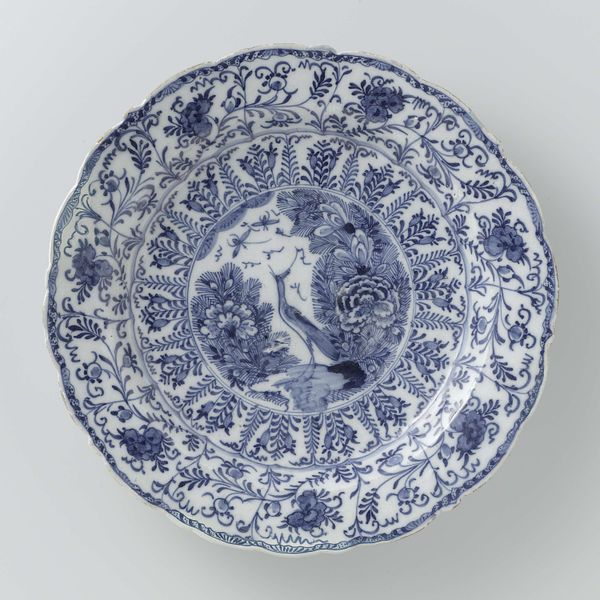
ceramic, earthenware
#
art-nouveau
#
ceramic
#
earthenware
#
ceramic
#
decorative-art
Dimensions: Diam. 8 3/16 in. (20.8 cm)
Copyright: Public Domain
Curator: Here we have a plate, crafted sometime between 1891 and 1895 by the Chelsea Pottery U.S. It's made of earthenware and beautifully exemplifies the Art Nouveau style. Editor: Oh, my goodness, the crazing! It’s like looking at an ancient map etched onto ceramic. I find it absolutely captivating; there is a sense of both age and fragility about this work. Curator: Absolutely, the crazing is noteworthy, likely an intentional feature. What I find fascinating is how this object bridges fine art and craft, using labor-intensive processes to create something functional, yet highly decorative. This challenges conventional boundaries, prompting one to consider production, consumption, and labor related to ceramics from this period. Editor: Yes, those whimsical bunnies dancing along the rim! I imagine the potter humming to themselves as they painted each one, the slight variations in each indicating how they would allow themselves to fall into the feeling, the freedom, of spontaneous brushstrokes. I could almost smell the earthy aroma from when it was pulled hot from the kiln, years ago. Curator: Thinking about materiality, we can reflect upon what it represents: an American response to European Art Nouveau. The earthenware reflects accessibility, in its raw materials, relative to other high-end ceramics. Its design, clearly meant for display as much as service, also tells a great deal about American social life during this time and the consumption of beautiful things by those beyond the wealthy elite. Editor: Beautifully said, there is almost a tension to it as you lay the historical significance bare; I feel as though it is a quiet celebration of accessible beauty in this moment. Even after its prime, its beauty perseveres to delight generations forward with whispers from an era where creativity and labor converged with the birth of a new design movement. Curator: Yes, exactly. I believe reflecting on all this truly shows how art objects reveal socio-economic conditions. Editor: Indeed! We end up contemplating far more than simply surface and glaze; it prompts us to contemplate histories echoing softly in everyday use objects such as a humble plate.
Comments
No comments
Be the first to comment and join the conversation on the ultimate creative platform.
